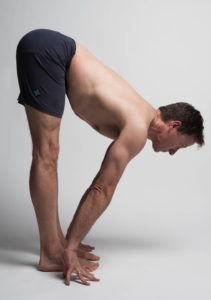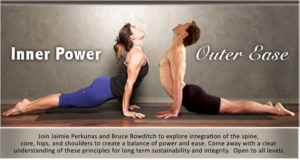
When my yoga practice and I were younger, I remember seeing incredible feats of strength and flexibility in books (the internet was barely a thing then). Seeing those images was sort of intimidating. But I was also fascinated and inspired. I wanted to be able to do it all. I worked really hard and put in a lot of time. I eventually began teaching yoga. I thought my purpose as a teacher was to constantly push the edge toward achieving some pinnacle of proficiency in as many poses as possible. Students found my classes challenging and I was proud of that. I saw working and opening the body to an extreme level as a way to move through what I perceived as emotional, mental and spiritual blocks that kept us from our highest personal expression as embodied beings. I may have been on to something. Or maybe I was simply trying to mask my own doubts and fears. The students I attracted were right there with me, wanting to learn more and willing to constantly pushing their edge. But that edge can be double sided.
Developing your body’s ability to perform extreme asana, working to your end range of motion and striving to continually increase that range carries risk. While being able to execute a deep pose may be exciting and gratifying on a certain level, I no longer find it worth the potential downside. Continually maxing-out the joints can have serious repercussions: instability from overstretched connective tissue, muscle strain, nerve tissue irritation, and cartilage damage. In the long term, it isn’t worth it. So then what should asana practice look like as we continue to move through our time on this earth?
As I get older, I see asana as a means of creating and sustaining physical poise, strength and healthy movement for the long-term, and is one element of a holistic approach to living an integrated and balanced life. I increasingly put the physical practice of postures into this wider frame of life and all its many facets. The cultivation of prana through pranayama and meditation are an integral aspect of yoga practice as well. Prana connects and weaves through all aspects of us, from our thoughts to our perceptions and emotions as well as the physical body.
I wish for myself and all of us a long, productive and fulfilling life. I believe the aging process can be one of continual growth and discovery rather than a falling apart. Through a comprehensive and balanced practice we can open up more and more to our potential and to experience all that life has to offer in a loving, compassionate way. While our body’s limits need to be recognized and honored, our capacity for love, kindness, understanding and generosity is infinite. In my classes and in my life I am moving toward this perspective. I still have a full daily asana practice that, from the outside, may not appear to have changed much from years past. But I am now more sensitive to what I need on any given day to create and maintain healthy balance. Each of us have our gifts and our places of challenge, work and discovery. Asana practice can be a deeply creative way of experiencing expanded joy and fulfillment. The form of our practice will be unique to each of us. The one constant is change; nothing ever remains the same. Our practice can be about meeting that change with grace, respect and an open heart.
INNER POWER – OUTER EASE Workshop at Yoga Is Therapy – April 28 &29 (click)


🙏perfect timing Bruce as I reflect not only on my yoga teachings but also my own personal practice. My mojo of continual perfection; to hold inversions 10 min each. The contortions I yearned to complete w/accurate alignment whike first doing no harm. I was always raising the bar. A few mos ago I shifted to a mindfulness practice, present centered, meditation and breath.
I just read your post, chewed on the pearls and felt a heart felt connection. I resonated w/your post knowing I’m exactly where I am to be @ this stage of LYFE. Pranams Mudita🕉